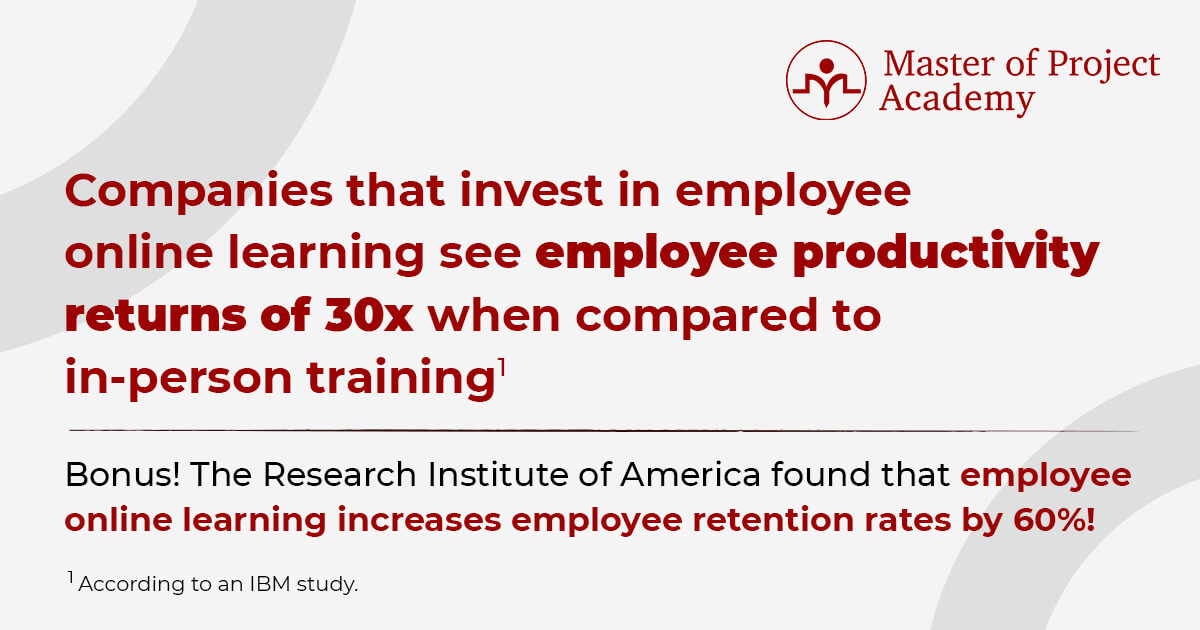In a 2021 survey of Human Resources leaders, Gartner found two interesting points regarding the management of change: 48% reported change management as a top priority and 54% reported their teams are suffering from change fatigue.¹ The first statistic reflects how much importance change management has in organizations and the latter one reflects how poorly most organizations manage it.
- Our PM Core™ – Project Management Training for Business helps organizations develop their teammates into practitioners who can deliver measurable returns
Why Change Management Is Important?
In rapidly changing environments, the importance of managing change well must not be overlooked. When it is poorly managed, our teams become overwhelmed, frustrated, and ultimately fatigued. When individuals experience change fatigue, the likelihood of them performing well decreases, and the likelihood of them searching for outside employment increases. Because of this, all organizations need to take on an active role in the management of the change.
How To Take An Active Role In The Management Of The Change?
While there are multiple change management models and methods that can help your organization succeed and thrive, all of them include a few common elements that can be condensed down into 5 Processes.
1. Vision
Before any work can be done, effective leadership must be assigned the responsibility of managing the change. This includes securing strong sponsorship for the project from the executive level and strong change management at the project level. This leadership team will then outline the vision of the change which includes the definition of success, the origins of the change, the benefits to the strategic goals of the organization, and the objectives of the change.
- Learn more about Master of Project Academy’s Leadership Program where your leaders will get instructive and hands-on training through interactive exercises, case studies, templates, and techniques that can be customized to your organization’s specific needs.
2. Plan
Once the vision and leadership are outlined, the next step involves planning for the change. At this time, leadership will further delineate the parameters of the change, how they will communicate, how they will ensure the necessary skills are present, the practical tasks of implementing the change, and then how they will ensure the change “sticks.”
- Project Management is delivering a scope, for a defined budget and schedule. There are severe consequences of poor project management. Read more about the Consequences of Poor Project Management
3. Communicate
As part of building the team to execute the change, leadership will now work to create awareness of the need for the change, focusing on the benefits. Through this process, leaders’ goal is to not only ensure the teams understand the change and what it will entail, but to build excitement about the change. It is in this phase where strong leaders demonstrate their worth, as motivation and positive responses to resistance require strong emotional intelligence, motivational and leadership skills.
4. Train, Educate & Build Confidence
It is at this time that you ensure that the teams learn how the change will impact individuals, processes, etc. The focus also entails ensuring that the skills needed to implement the change are present within the teams. In this phase, the goal is to ensure the teams possess not only the skills to implement the change but the confidence in themselves and their ability to do so.
- Unlock the undiscovered project delivery competence of your organization with Master Of Project Academy’s corporate services and training.

5. Support
Once the change has been made, you need to ensure that it “sticks.” The enthusiasm that you worked to build earlier, needs to be sustained. This is done through reinforcement, performance management, and ensuring the teams have the necessary support systems in place to ensure the change is now a part of the overall system and culture.
Conclusion: Change Management
While this can be a time-consuming practice, and is very often one that is foreign to an organization, taking the time to ensure your organization effectively manages its changes will pay dividends in employee engagement, employee satisfaction, and the organization’s bottom line.

 Written by: Sandra Worley
Written by: Sandra Worley